INTERVIEW
Talking to… Olga Clapcott
The salon owner, educator and two-time winner of PB Nail Salon of the Year tells Kezia Parkins about her passion for training and her new foot health care courses
Olga Clapcott first fell in love with nails as a little girl back in Belarus, where her mum would paint pretty designs on her fingers and toes. “Growing up I always loved long nails – and I still do,” she laughs, holding up her perfectly manicured long, coffin-shaped nails.
Back in Belarus, Clapcott began her career as a professional interpreter, being practically fluent in English, German and Spanish as well as her native tongue. All the while, still nail obsessed, she was taking care of her own nails and building a separate skill.
“Back then, around 25 years ago, the options for getting your nails done were not that great so I wanted to learn for myself,” she says. When she moved to the UK to continue working as a translator, she describes her bags as overflowing, mostly with nail polish.
One day, walking through the streets of Westbourne, near Bournemouth, where she’d settled, Clapcott noticed a job advert in the window of a nail salon. She applied, got the job and the next day she was working with clients.
It was around 2011 that she first started entering competitions, which she says changed her career and greatly helped get her timings speedy enough for a salon environment. “Competing under pressure is very hard, so I would practise all the time. I’d time every single step to get quicker,” she says. She still shows her students the marble stiletto nails that won her a silver medal at her first ever competition, to show what can be achieved with hard work.
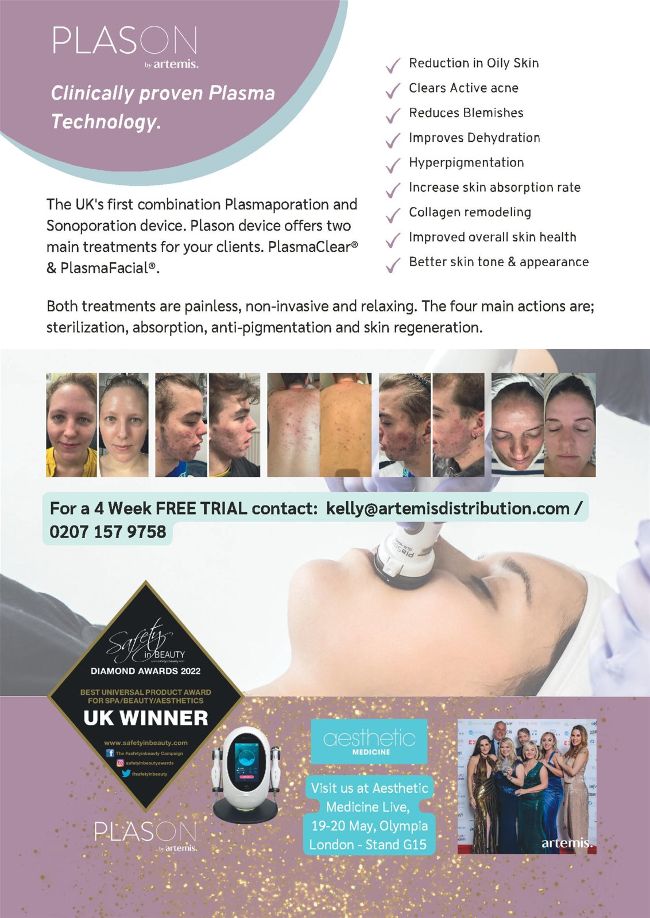
Although she loved her career as a salon tech, life was full of uncertainty. “I moved from salon to salon. One would close so I would have to find another,” she says. Deciding it was time to go it alone, Clapcott started renting a room in another salon and it was around this time she met her husband, Alex Clapcott, whom she married just three months later. Meanwhile, her career and client growth was accelerating and she soon outgrew the space she was in. As a business consultant, her husband was perfectly placed to help her open her own salon in 2012. They called it Tigerlilly, named after their little dog Tiger. Clapcott credits the fast growth of Tigerlilly to the attention she pays to customer service and the little touches that make people feel special. For example, every pedicure customer gets a pair of branded flip-flops to leave the salon in – apractical gift and a walking advertisement. “Some regulars give a set away to a friend so it’s a great way of marketing,” she says.
In 2017, Clapcott and her husband opened Tigerlilly Wimborne. Both salons are delightfully colourful and unique, reflecting Clapcott’s energy and zest for her craft.
Standing out
Aside from being a two-time winner of Nail Salon of the Year at the Professional Beauty Awards and the winner of multiple Scratch Awards, there are plenty of other reasons why Clapcott stands out.
We’ve all seen the incredible Russian techniques that provide an ultra-clean, plush cuticle and precision prep. Being from Belarus and her ability to speak Russian has meant that Clapcott can access these sought-after skills when she goes back to attend training or by joining remotely from the UK.
Also known as the dry manicure technique, this approach to prep, often using an e-file, has been being criticised on social media of late. “As with anything else, as long as you work safely, have the right training with a strong understanding of the nail anatomy, any contraindications and have the right tools and training, this is a great technique,” says Clapcott. “I love super-clean cuticle work… if done correctly then you’re not damaging the nail, you’re actually working to beautify it and make the product last.” Plus, she explains, once a client receives premium cuticle work, if they go to another tech who is less focused on this side of prep, the client will really notice that. “The majority of our clients come back because we provide a full manicure and not just gel polish,” she adds.
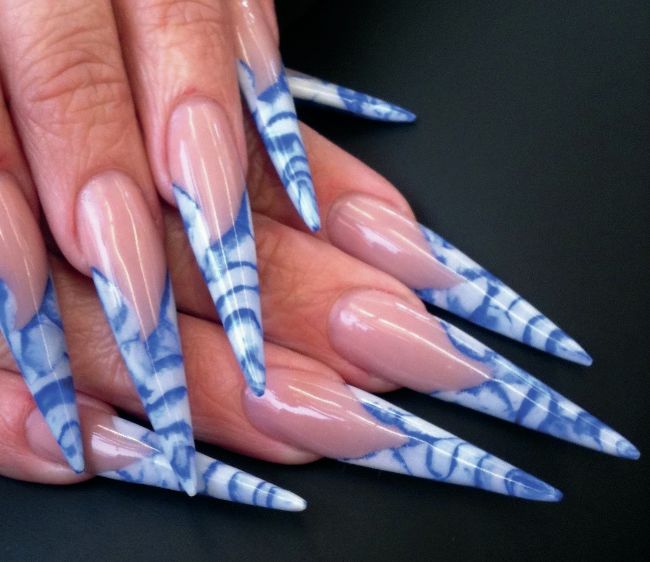
Clapcott’s silver medal-winning stiletto nails
Tigerlilly also has its own line of stunning products for nail techs. It started with forms for sculpting because there were none on the market that Clapcott liked working with. This quickly progressed to include files, e-files and drill bits.
Clapcott teaches the dry manicure technique to her students and it’s a module she takes particularly seriously. “It is a powerful tool, and in the wrong hands it can cause a lot of damage.”
Education obsession
As an educator with a separate academy up the road from her Westbourne salon, Clapcott is passionate about providing high-quality learning with Ofqual-regulated qualifications, providing NVQ Levels 2 and 3. “I’ve always wanted to teach regulated qualifications, but it was hard to work out how to get there,” she says. “You need a lot a lot of qualifications to get into teaching at a high level and then get centre approved. There’s a lot of work that can take years but I think that’s good because it really means that only the quality educators get through it.”
Key Dates
2005 Olga Clapcott gets her first job in a nail salon
2007 Starts working for herself as NikOI Nails (an abbreviation of her maiden name)
2011 Enters her first competition, Nailympics, and wins silver in the Stiletto Nails category
2012 Tigerlilly Westbourne salon opens
2017 Opens her second salon, Tigerlilly Wimborne
2020 Tigerlilly receives NVQ qualification delivery centre approval
2022 International Nail Training Academy (INTA) dedicated training centre opens
2022 Wimborne salon wins Nail Salon of the Year at PB Awards
2023 Wins another PB Award. INTA gets approval for Level 3 FHCP qualification
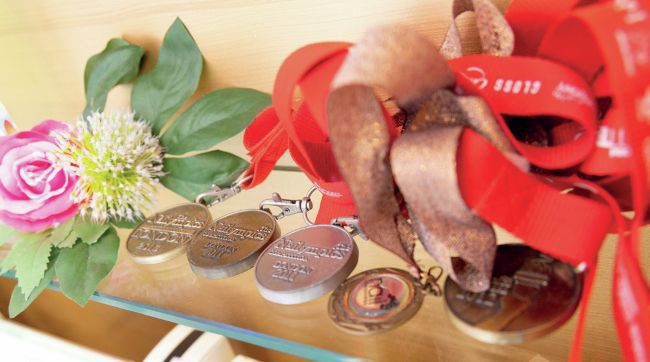
A few of Clapcott’s competition medals
Clapcott feels that e-file courses, in particular, can be lacking and says that nail techs wanting to learn to use the tool should research courses thoroughly. “It’s easier to start fresh than unlearn the wrong technique,” she says. “A bigger issue is nail techs who have done poor training then go on to educate others.”
Clapcott also ensures all her learners have an in-depth understanding of allergies, how to avoid them and how to recognise them, and when to refer to a healthcare professional. “Allergies are mentioned a lot at the moment – by consumers, in the training centre and by insurance companies too. They want to get all the information in case there is a claim. So, all of this extra knowledge is really essential for the learners.”
Step in the right direction
As a passionate teacher, Clapcott is always levelling up her own skills by attending courses in the UK and overseas, and she has no limits when it comes to her dedication to improving and innovating the nail industry. An example of this is her vision for the future of foot care, an area that intersects both healthcare and the nail industry but is lacking in both.
“Advanced foot care is an area that needs to be looked at and reviewed,” says Clapcott. She says around 80% of the population have a contraindication with their feet, meaning that many foot problems transcend the usual realm of the nail salon.
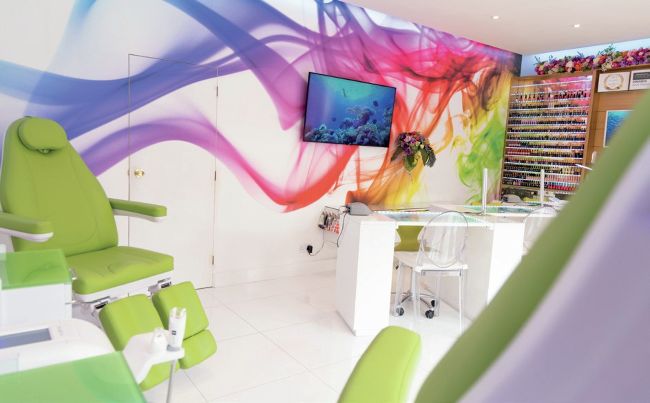
The bright interior at Tigerlilly Wimborne
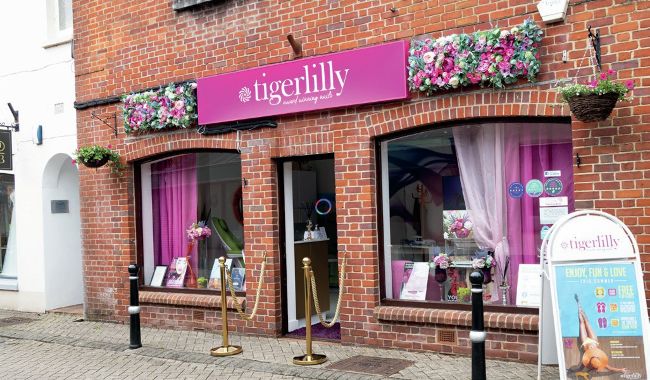
Tigerlilly Wimbourne exterior
“Anything abnormal like an ingrown or damaged toenail is a contraindication, so when you talk about a standard spa pedicure, that’s only really catering to the less than 20% of people who have got perfect feet,” she says. “Clients’ expectations have changed. If they have a problem with a toenail and go and see a nail technician they will end up disappointed when we can’t actually do anything.”
Clapcott says that what often happens is an overlay is constructed over a damaged nail, which can lead to fungal infections. Pushing for change, she has raised the issue with a few awarding bodies but admits that changing National Occupational Standards is often a slow process.
Clapcott has a Level 4 diploma in advanced foot care herself, so she applied to be able to deliver this qualification to students and managed to get approved far quicker than she expected, due to the fact that her training academy is an Ofqual-regulated centre.
She sees clients when she can, fitted around running her salons and delivering courses, and is currently writing the qualification that she will soon be able to deliver to students. Once they have achieved this, they will be able to go on to open their own clinics and see clients.
“I want the programme I deliver to be a bit more modern than others, and this is where I will use my experience of working in the beauty industry and running a high-street salon,” she says. “The majority of foot health professionals (FHPs) have been trained to mainly work with elderly people, going out to visit care homes, but there are so many other areas where a FHP is needed.”
Talking of how she aims to bridge the gap, she adds, “Many clients with toenail problems think it’s not quite the job for a podiatrist but, equally, it’s not quite the job for a salon.” Clapcott believes there is a gap in the market for more of an aesthetically-focused FHP, delivering something more in depth than a pedicure. “People of all ages could benefit from it – even really young people who play a lot of sports,” she says. “But the industry typically only focuses on people above a certain age, once the damage is done.”
Clapcott’s vision for the future is to open footcare clinics to meet this unmet need in the market, once her advanced FHPs are trained up. “There are people who need help with their foot health but they also want that bit of luxury you get from a salon,” she says.